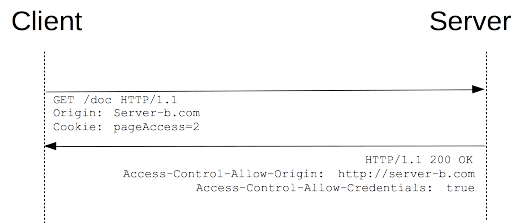I am trying to seed an user entity in my database. The User entity has an owend property EmailPermissions.
When I run the command
dotnet ef migrations add Initial;
I get the error
The seed entity for entity type 'User' cannot be added because it has the navigation 'EmailPermissions' set. To seed relationships you need to add the related entity seed to 'EmailPermissions' and specify the foreign key values {'UserId'}.
but since EmailPermissions is an owned entity I didn't give it an explicit UserId property, meaning I can't seed it separately in the database.
the entity
public sealed class User : IdentityUser
{
public User()
{
EmailPermissions = new EmailPermissions();
}
/* [..] */
public string TemporaryEmailBeforeChange { get; set; }
public bool IsEmailAwaitingUpdate { get; set; }
public EmailPermissions EmailPermissions { get; set; }
public ICollection<Registeration> Registerations { get; set; }
/* [..] */
}
[Owned]
public class EmailPermissions
{
/* [..] */
public bool Newsletter { get; set; }
public bool PromotionalOffers { get; set; }
public bool PrestationReminders { get; set; }
public bool PrestationOffers { get; set; }
}
The seeding call
private void SeedUser(ModelBuilder builder)
{
builder.Entity<User>().HasData(
new User
{
Id = "37846734-172e-4149-8cec-6f43d1eb3f60",
Email = "foo@foo.foo",
UserName = "foo@foo.foo",
PasswordHash = "AQAAAAEAACcQAAAAEIytBES+jqKH9jfuY3wzKyduDZruyHMGE6P+ODe1pSKM7BuGjd3AIe6RGRHrXidRsg==",
SecurityStamp = "WR6VVAGISJYOZQ3W7LGB53EGNXCWB5MS",
ConcurrencyStamp = "c470e139-5880-4002-8844-ed72ba7b4b80",
EmailConfirmed = true
});
}
If I remove the instantiation of the EmailPermissions property from the constructor I get the following error instead
The entity of type 'User' is sharing the table 'AspNetUsers' with entities of type 'EmailPermissions', but there is no entity of this type with the same key value that has been marked as 'Added'.
How can I seed a user via the .HasData method when it has an owned property ?
Currently this information is missing from the documentation (tracked by #710: Document how to seed owned types). It's explained by EF Core team (with example) in the #12004: Problem seeding data that contains owned type thread:
Owned types must be seeded with a HasData call after the OwnsOne call. Also, since owned types by convention have a primary key generated in shadow state, and since seed data requires keys to be defined, then this requires use of an anonymous type and setting the key.
which is basically what the exception message is telling you.
Following the advice, you should remove the instantiation of the EmailPermissions property from the constructor and add a seeding code like this:
builder.Entity<User>().OwnsOne(e => e.EmailPermissions).HasData(
new
{
UserId = "37846734-172e-4149-8cec-6f43d1eb3f60",
// other properties ...
}
);
Quite annoying and error prone due to the need to know the shadow PK name and the usage of an anonymous type. As the same member mentioned
Note that this would become easier if navigations were supported for seeding, which is tracked by #10000: Data Seeding: Add support for navigations
Thank Ivan Stoev's answer. i add some more code to easy to imagine.
this is code of seed data function base on example.
- First adding data of User.
- After that add data of owned object.
- Data of owned object have to be anonymous because PK will request. This PK will not appear in database. Name should be entity name + Id
Example: Entity XXX => PK will be XXXId
private void SeedUser(ModelBuilder builder)
{
builder.Entity<User>(b =>
{
b.HasData(new User
{
Id = "37846734-172e-4149-8cec-6f43d1eb3f60",
Email = "foo@foo.foo",
UserName = "foo@foo.foo",
// more properties of User
});
b.OwnsOne(e => e.EmailPermissions).HasData(new
{
UserId = "37846734-172e-4149-8cec-6f43d1eb3f60",
Newsletter = true,
PromotionalOffers = true,
PrestationReminders = true,
PrestationOffers = true
});
});
}
If you want to avoid using an anonymous type to specify the shadow property keys, you can declare them explicitly in your model class and configure them with the Fluent API as keys. This way you don't have to guess the property names and it's less error-prone.
If the name supplied to the Property method matches the name of an existing property (a shadow property or one defined on the entity class), then the code will configure that existing property rather than introducing a new shadow property.
Source
In my scenario I wanted the owned-type property to be auto-initialed in the parent class:
public class User
{
EmailPermissions _EmailPermissions;
public EmailPermissions
{
get => _EmailPermissions ??= new EmailPermissions();
set => _EmailPermissions = value;
}
}
When I tried to add seed data I got that nasty exception.
The solution was to pass the User as anonymous type in its HasData call.



